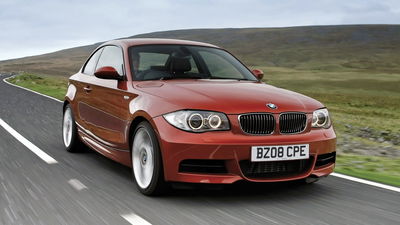The VW W12 Could Have Been A Supercar From The People’s Car

The announcement that the VW W12 engine has finally ended production, with the last of the 6.0-litre twin-turbocharged mills being hand-assembled in Bentley’s Crewe factory this month, brings to a close the story of one of the most remarkable engines in recent history. It was a powerplant that could only have emerged from the sheer ambition and engineering talent of the VW Group under the guidance of its auteurish former chairman, Ferdinand Piëch.
While the W12 is most closely linked to the Flying B, it found its way into versions of the VW Phaeton and Touareg and the Audi A8 too, but its gestation happened in something very different to any of the production cars it wound up in.

At the 1997 Tokyo Motor Show, VW – at this point a company that had barely produced anything sportier than a Golf GTI – rolled out a jaw-dropping statement of intent for the new millennium.
Called the W12 Syncro, its low-slung bright yellow body, penned by Italdesign’s Giorgetto Giugiaro, was nonetheless unmistakably late ’90s VW. The really interesting part, though, was just visible beneath the rear of its full-length glass roof.

It was a 12-cylinder engine, but not like the V12s found in Ferraris, Lamborghinis, Jags, et al. Made by fusing together two of VW’s narrow-angle 2.8-litre VR6 engines, it was a W12 – four banks of three cylinders. This meant it could effectively be half the length of a traditional V12.
In its original form, it was a 5.6-litre, naturally aspirated unit, making around 414bhp – comfortably enough to admit it to the supercar club of the day. The Syncro part of its name referred to its four-wheel drive system.

At this point, it was nothing more than a static showpiece, but VW nevertheless rolled out a red Roadster version, with a barchetta-style body and rear-wheel drive, a few months later at the 1998 Geneva Show. What made all of this more impressive was that it was months before VW went on its luxury brand buying spree, snapping up Bentley, Lamborghini and Bugatti. In early 1998, the Porsche 911 was the most exotic thing made by any of the group’s companies.
Once it did acquire those brands, everything went quiet with the W12 concept for a bit, although it was clear that VW had plans for the engine for its new collection of luxury marques (as well as other W engines, experimenting with a W16 that would eventually make production in something called the ‘Bugatti Veyron’).

It must have been a bit of a surprise, then, in 2001, when VW pitched up at that year’s Tokyo Motor Show with another W12 concept. Its front end was slightly tweaked, its engine now displaced 6.0 litres for 591bhp and 458lb ft of torque, and it had a new name: W12 Nardò.
That name referred to the Nardò test track in southern Italy, specifically its fearsome 7.8-mile banked bowl circuit, around which the W12 was about to go on a record spree. In February 2002, a stealthy black W12 prototype broke six world records. Perhaps the most impressive of these saw it maintain an average of 201mph over 5000 miles. As of 2019, those records still stood.

This was all mighty impressive and undoubtedly helped inform future developments of the W12 engine, which debuted in 2001 in the Audi A8 and would remain in production until July 2024. What, though, of the W12 concepts themselves? Surely they were never going to see the light of day beyond a motor show stand?
Well, not long after its record run, VW said the W12 was in “the decisive phase of production development,” suggesting that production was seriously on the table at one point. Ultimately, it proved an ambition too far for a brand whose name, let’s not forget, means ‘People’s Car’, even in an era when it developed a luxury saloon to outdo the Mercedes S-Class and sold a vast SUV with a turbodiesel V10.

It would ultimately be left to Lamborghini, Porsche and Bugatti to represent the VW group on the supercar stage. The W12 concepts would remain motor show memories, immortalised in a few video games, but still noteworthy as the genesis of one of the most fascinating engines ever to make production.















Comments
No comments found.